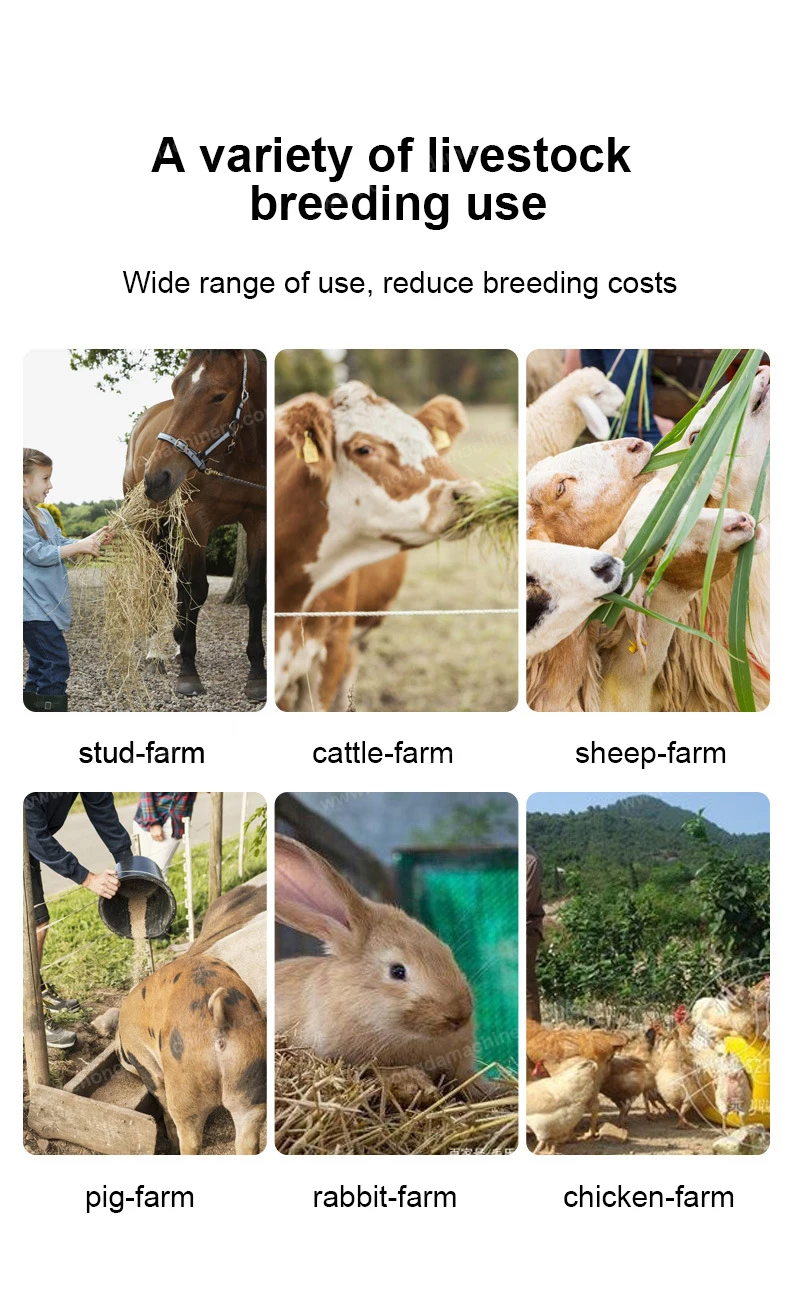animal feed pelletizer machines
Nov . 20, 2024 22:28 Back to list
animal feed pelletizer machines
Understanding Animal Feed Pelletizer Machines
Animal feed is a crucial component of livestock production, and the process of manufacturing it has evolved significantly over the years. One of the most innovative advancements in this area is the development of animal feed pelletizer machines. These machines are designed to produce animal feed in pellet form, which offers various benefits over traditional feed methods. This article explores the workings of pelletizer machines, their advantages, and their importance in modern animal husbandry.
What is a Pelletizer Machine?
A feed pelletizer machine is a specialized piece of equipment used to compress animal feed ingredients into small, cylindrical pellets. The process typically involves grinding, mixing, and conditioning the raw materials before they are fed into the pelletizer. Once inside, a combination of heat and pressure shapes the feed into pellets. This method not only enhances the feed's nutritional value but also improves its storage and handling properties.
The Benefits of Using Pelletized Feed
1. Improved Nutrient Absorption Animals often have better nutrient absorption when consuming pelletized feed. The pelleting process helps to break down feed ingredients, making nutrients more accessible. This leads to improved growth rates and overall health in livestock.
2. Reduced Feed Wastage Traditional feed forms, such as grains or powder, can easily become wasted, especially if spilled or scattered. Pelletized feed is less prone to waste as it is more compact and easier for animals to consume.
3. Convenient Storage and Transportation Pelleted feed takes up less space and is easier to store and transport compared to loose feed. This can lead to cost savings in feed handling and storage logistics, allowing farmers to manage their feed supplies more efficiently.
animal feed pelletizer machines

4. Customization Pelletizer machines allow for the production of customized feed formulations that meet the specific nutritional needs of different animal species. This flexibility enables farmers to provide tailored diets for their livestock, optimizing health and productivity.
5. Decreased Dust Production The pelleting process reduces the amount of dust generated compared to loose feed. This is beneficial for both the animals and the people working with the feed, as it minimizes respiratory issues caused by inhaling dust particles.
The Pelleting Process
The pelleting process begins with the preparation of raw materials. Ingredients such as grains, proteins, vitamins, and minerals are ground to a uniform size to ensure even mixing. The next step is conditioning, where steam or water is added to hydrate the mixture. This helps enhance the binding properties of the feed.
Once conditioned, the mixture is fed into the pelletizer machine, where it is compressed and formed into pellets. The pellets are then cooled and dried before being packaged for storage or distribution. The entire process is efficient and can be scaled up or down depending on the operational needs of the farm or feed mill.
Conclusion
Animal feed pelletizer machines are a vital innovation in the agricultural sector, significantly enhancing the efficiency and effectiveness of feed production. They offer numerous advantages, including improved nutrient absorption, reduced feed wastage, and the ability to customize feed formulations for specific animal needs. As the demand for livestock products continues to grow, the importance of efficient feed production methods will undoubtedly increase. Investing in a pelletizer machine can lead to better productivity, healthier animals, and ultimately, a more sustainable farming operation. In a world where efficient food production is paramount, animal feed pelletizer machines stand out as a game-changer for farmers and the livestock industry alike.
-
Hot Sale 24 & 18 Door Rabbit Cages - Premium Breeding Solutions
NewsJul.25,2025
-
Automatic Feeding Line System Pan Feeder Nipple Drinker - Anping County Yize Metal Products Co., Ltd.
NewsJul.21,2025
-
Automatic Feeding Line System Pan Feeder Nipple Drinker - Anping County Yize Metal Products Co., Ltd.
NewsJul.21,2025
-
Automatic Feeding Line System - Anping Yize | Precision & Nipple
NewsJul.21,2025
-
Automatic Feeding Line System - Anping Yize | Precision & Nipple
NewsJul.21,2025
-
Automatic Feeding Line System-Anping County Yize Metal Products Co., Ltd.|Efficient Feed Distribution&Customized Animal Farming Solutions
NewsJul.21,2025






